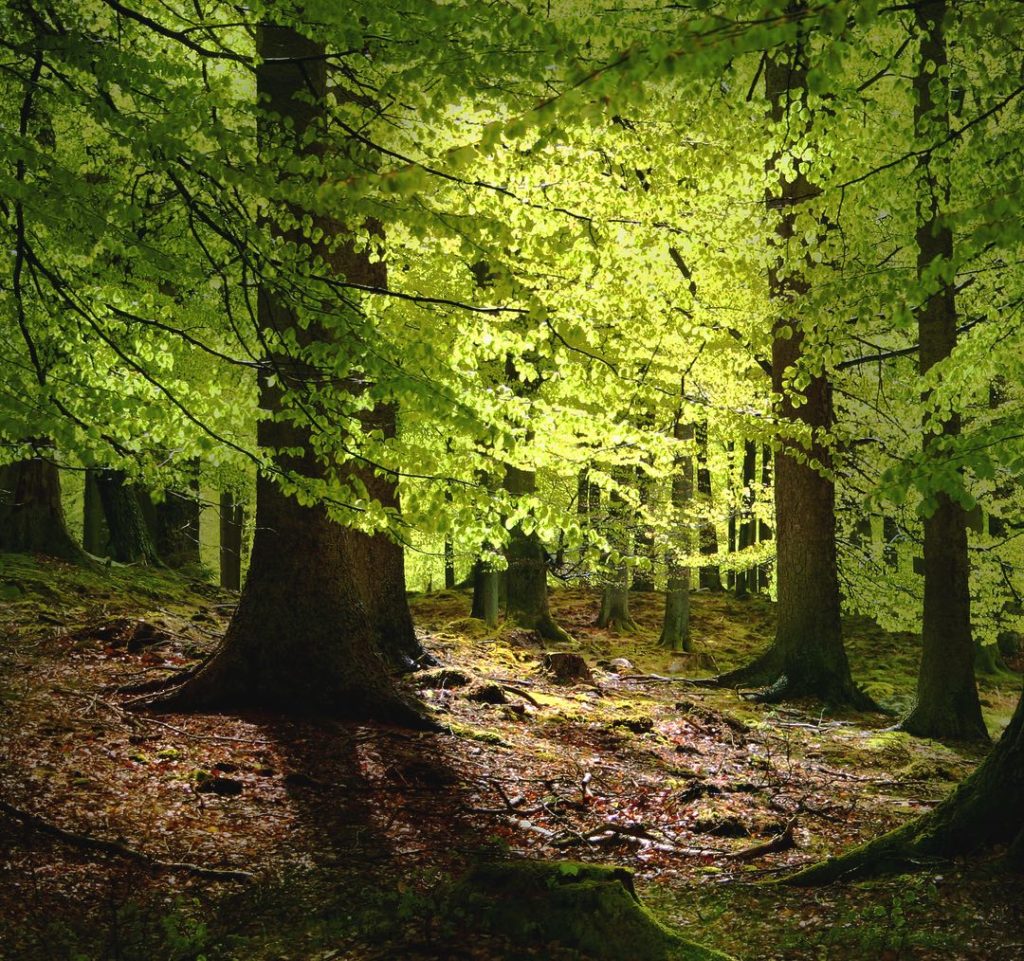
Denmark
Beech
Fagus sylvatica

General Description / Cultural Significance
Government representatives of Denmark say that the scent of the beech tree, Fagus sylvatica, comes closest to what one would call a national fragrance. The beloved beech is the country’s most common naturally occurring forest tree, and when it comes into leaf, it is a very special time for Danish people. The leaves of the beech tree unfold in a matter of hours, and those near them can hear it happen. These light green tender leaves are edible and a sure sign of spring in the country. The young leaves are picked between April and May, and incorporated into their cuisine, often eaten fresh in wild salads. The tree is large and ornamental, and can grow up to forty feet and provide excellent shade with its rounded wide-spreading crown. One variant of the tree, the tricolor beech, grows green, pink, and white leaves and is popular in parks. The fruit of the beech tree are called beechnuts or mast, and are commonly eaten in the fall by birds and mammals, as well as people. They are harvested directly from the tree before they fall to the ground where they can take on fungus and mold. The tree’s smooth silvery bark is strong and resistant when used as timber. It is used for firewood, and to smoke food, especially cheeses.
Since antiquity, the beech tree was used by European people for writing texts, especially of the religious sort. In today’s Dutch language, the word for “book” is boek, which means “beech tree.” The beech tree has been known to hold medicinal properties and it is one of 38 plants of the Bach flower homeopathic remedies, as it encourages positive potential and tolerance of others.
Climate Change/Conservation Status
In 2019, Denmark’s parliament voted to make carbon reduction a law. The country promised to reduce emissions to 70% of its 1990 carbon levels within 10 years. This includes the imposition of a carbon tax, and the country has made the choice to end the use of coal and to increase use of solar and wind power. They hope to achieve carbon neutrality by 2050 at the very latest.
Fagus sylvatica is not endangered at this time according to the IUCN, but the species is susceptible to infection by fungus and pathogens that cause tree rot. The threat of this kind of rot is increased by climate change effects. Climate change also limits the kinds of habitats that are suitable for this tree to grow. More research needs to be done in order to fully understand the threat of climate and infection in these trees.
Alternate Names
European Beech
Sources
Climate Change Post, n.d. Denmark. Centre for Climate Adaptation. [website]
Danish Nature Agency, n.d. History of Dyrehaven. The Danish Nature Agency. [website]
Kuhn, K.G., n.d.. Denmark: Information on recent and ongoing work in the area of climate change impacts on human health. [ebook] Copenhagen: Department of Infectious Disease Epidemiology.
Olesen, J., Jensen, T., & Petersen, J., 2000. Sensitivity of field-scale winter wheat production in Denmark to climate variability and climate change. Inter-Research, [website] 15, pp.221-238. ISSN: 1616-1572
Rasmussen, A., 2002. The effects of climate change on the birch pollen season in Denmark. Aerobiologia, 18, pp. 253-265. DOI: 10.1023/A:1021321615254
Royal Danish Consulate General. This statement can be found on the World Sensorium original website.
Sengupta, S., 2019. Copenhagen Wants to Show How Cities Can Fight Climate Change. The New York Times. [website]

